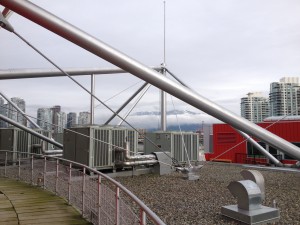Since ou r last blog post, our solution to the problem has changed. We have done a significant amount of research, and have come to the conclusion that the ultrasonic devices which we believed to be the best option will NOT work with the birds that we need to deter (seagulls, crows and pigeons in particular). This is because their range of hearing is similar to that of humans – rendering the devices useless. From our research of precedent examples, we believe that a multifaceted approach featuring spikes, adhesives and sonic (not ultrasonic) devices will be the best solution.
r last blog post, our solution to the problem has changed. We have done a significant amount of research, and have come to the conclusion that the ultrasonic devices which we believed to be the best option will NOT work with the birds that we need to deter (seagulls, crows and pigeons in particular). This is because their range of hearing is similar to that of humans – rendering the devices useless. From our research of precedent examples, we believe that a multifaceted approach featuring spikes, adhesives and sonic (not ultrasonic) devices will be the best solution.
Our project implementation process has been that of creating a formal document. Given the setback of the ultrasonic devices however, we have extended our self-defined deadline from March 22nd to the 28th to give the client the best idea of how to solve their problem. Each of the members in our group has been assigned a section in the report to write, and we are well on our way to being finished. We will be meeting again this weekend to compile our sections and discuss our findings/conclusions section.
With regards to the poster, we have a surprise for the class which we hope will work out. While we do not want to discuss the details on this public blog, one setback that we are having is that we are finding it difficult to rely on people outside of the group to respond in a timely manner.
We hope that our client will consider implementing our recommendations. We believe that, if put into practice, these solutions could provide significant savings which could then in turn contribute to promoti ng scientific interest in the community.

